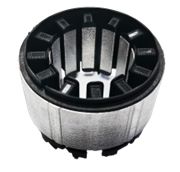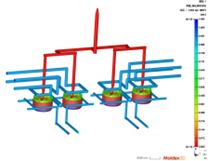What is Insert Molding Process?
Introduction
Insert molding is an advanced injection molding process that enhances product durability, functionality, and design flexibility. This technique integrates metal or other components into a molded plastic part, creating strong and reliable assemblies without the need for secondary operations like welding or fasteners.
As a leading mold manufacturer and injection molding provider, TXS (Tianjin Xuansheng Technology Co., Ltd.) specializes in insert molding for industries such as automotive, medical devices, electronics, and industrial components. In this article, we will explore what insert molding is, its advantages, applications, and how our expertise can benefit your projects.
What is Insert Moulding?
Insert molding is a process where a pre-formed component, typically metal (such as screws, connectors, or bushings), is placed into a mold cavity before molten plastic is injected around it. Once cooled, the plastic solidifies, securing the insert in place. This results in a single, integrated component with enhanced strength and design efficiency.
This process differs from overmolding, where a second layer of plastic is molded over an existing part rather than embedding an insert before injection.
Key Advantages of Insert Molding
1. Stronger and More Durable Parts
- Insert molding creates a strong mechanical bond between the plastic and insert, improving durability and reliability.
- Eliminates weak points caused by adhesives or separate fasteners.
2. Enhanced Design Flexibility
- Allows for the combination of different materials (e.g., plastic with metal or ceramic).
- Supports complex geometries without extra assembly steps.
3. Reduced Production Costs
- Eliminates secondary operations such as welding, screwing, or assembling.
- Speeds up production by integrating multiple parts into one.
4. Lightweight and Miniaturization Benefits
- Ideal for miniaturized electronic components and medical devices where space-saving is crucial.
- Can replace heavier all-metal components with lightweight plastic alternatives.
5. Higher Precision and Consistency
- Using advanced molding simulation and precision machinery, TXS ensures high accuracy (±0.002mm) for insert-molded parts.
Insert Molding vs. Overmolding: What’s the Difference?
| Feature | Insert Molding | Overmolding |
|---|---|---|
| Process | Insert is placed before plastic injection | Plastic is molded over an existing part |
| Common Inserts | Metal components (screws, pins, connectors) | Rubber, plastic, or soft materials |
| Bonding Method | Mechanical interlock + plastic encapsulation | Adhesive or mechanical bonding |
| Key Applications | Automotive parts, medical devices, electronics | Soft-touch grips, ergonomic handles, protective layers |
Common Applications of Insert Molding
1. Automotive Industry
- Sensor housings, gear components, and electrical connectors benefit from insert molding due to high strength and weight reduction.
2. Medical Devices
- Surgical instruments, syringe handles, and pacemakers require precision and durability, which insert molding provides.
3. Electronics & Consumer Products
- PCB connectors, USB housings, and power tool grips use insert molding for better wear resistance and reliability.
Why Choose TXS for Insert Molding?
At TXS, we specialize in high-precision insert molding, offering:
✅ ISO 13485, IATF 16949, and ISO 9001 certifications ensuring global quality standards.
✅ State-of-the-art equipment from Germany, Switzerland, and Japan for precision molding.
✅ Advanced molding simulation to optimize design before production.
✅ One-stop service from material selection, mold development, to final assembly.
Get a Free Consultation
Need insert molding for your next project? Contact TXS today at
Website: www.molds-maker.com
or Email: [email protected] to discuss your requirements.
Transform your product design with high-quality insert molding—partner with TXS today! 🚀


